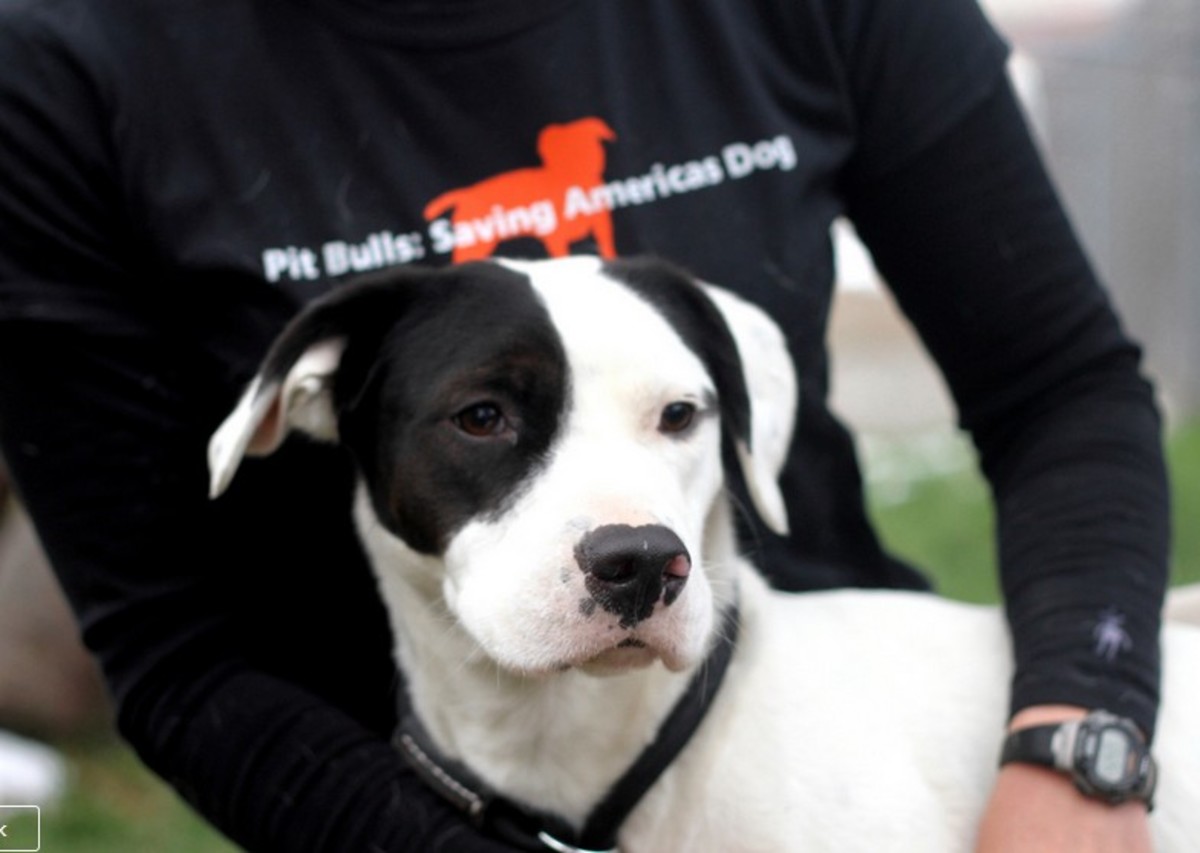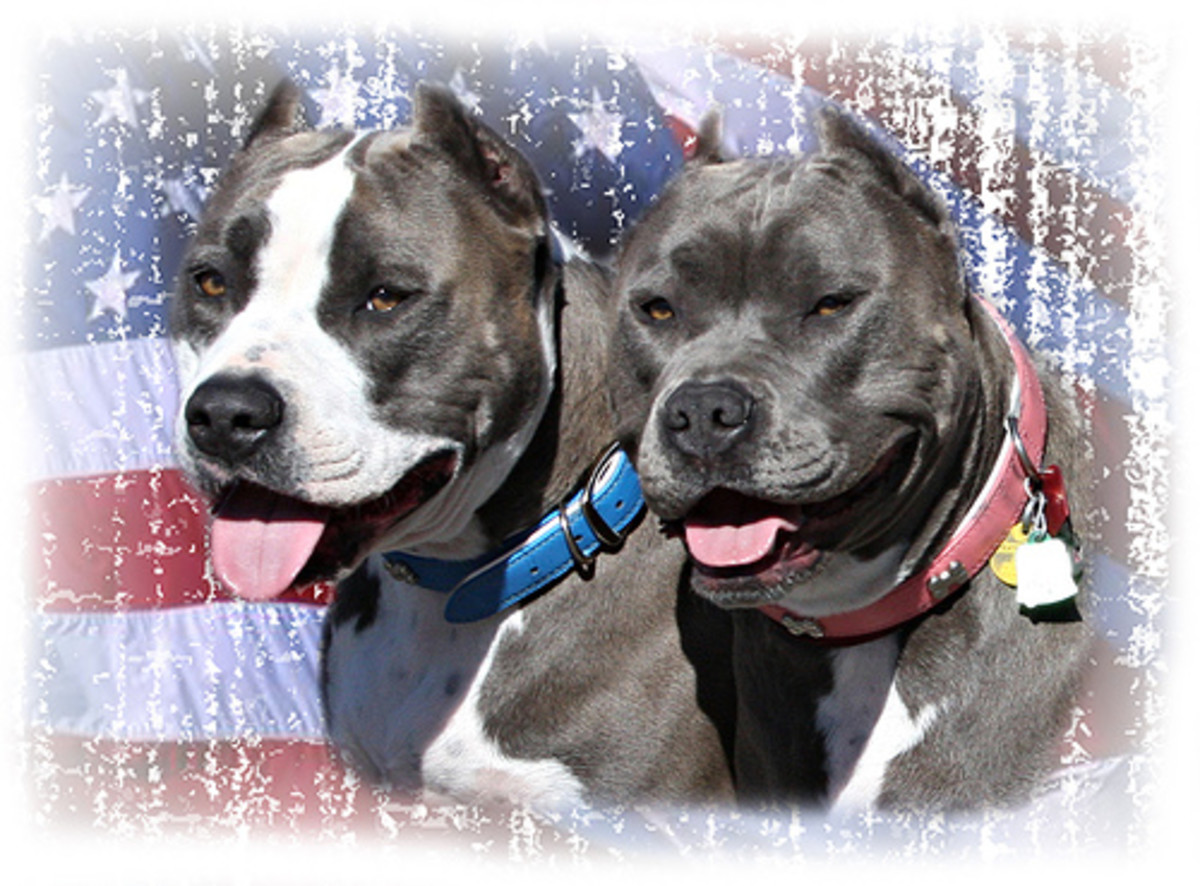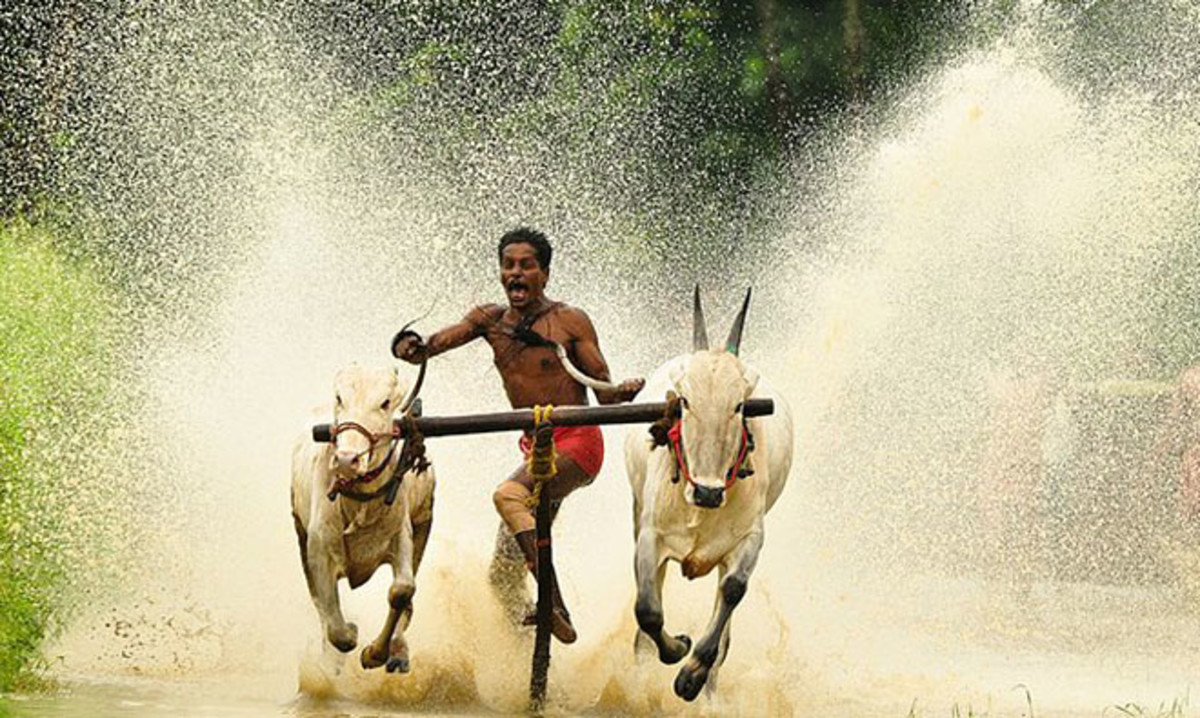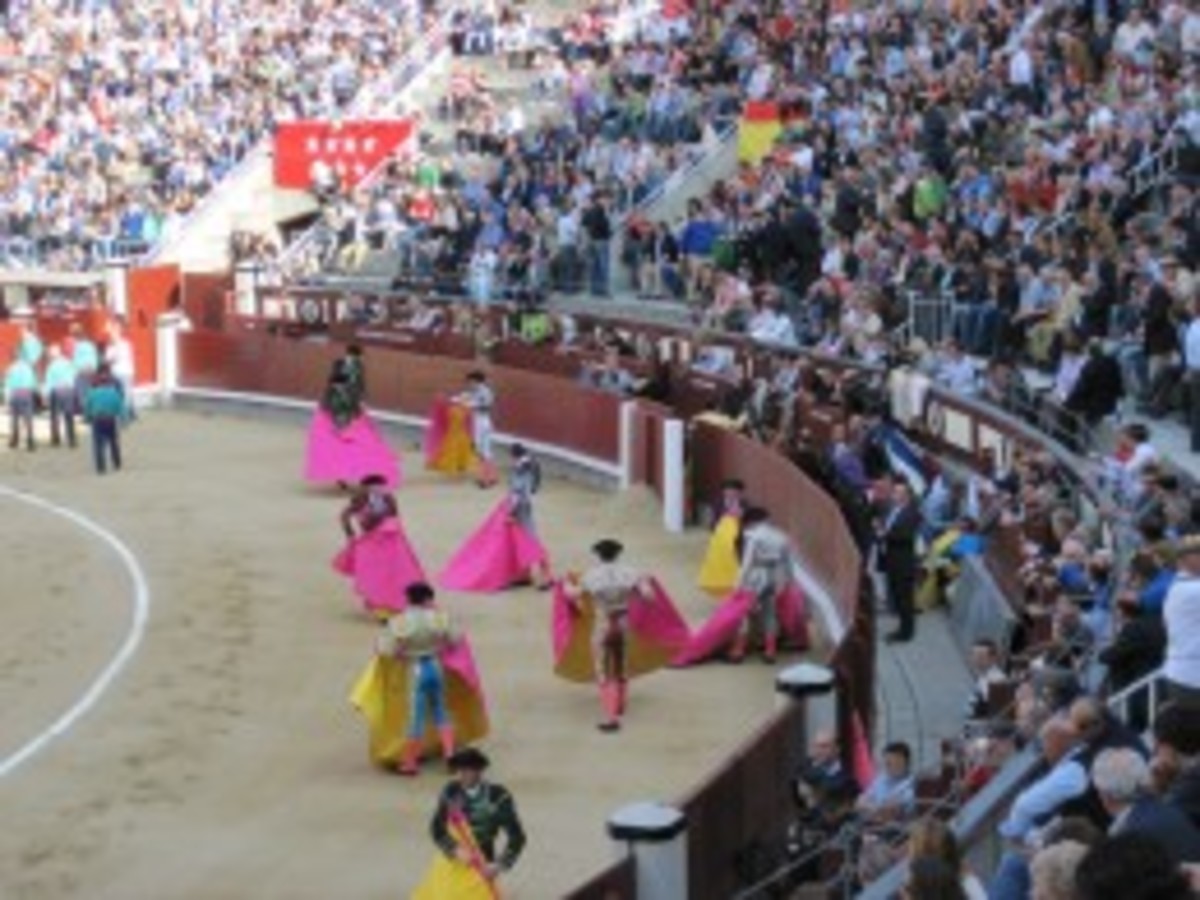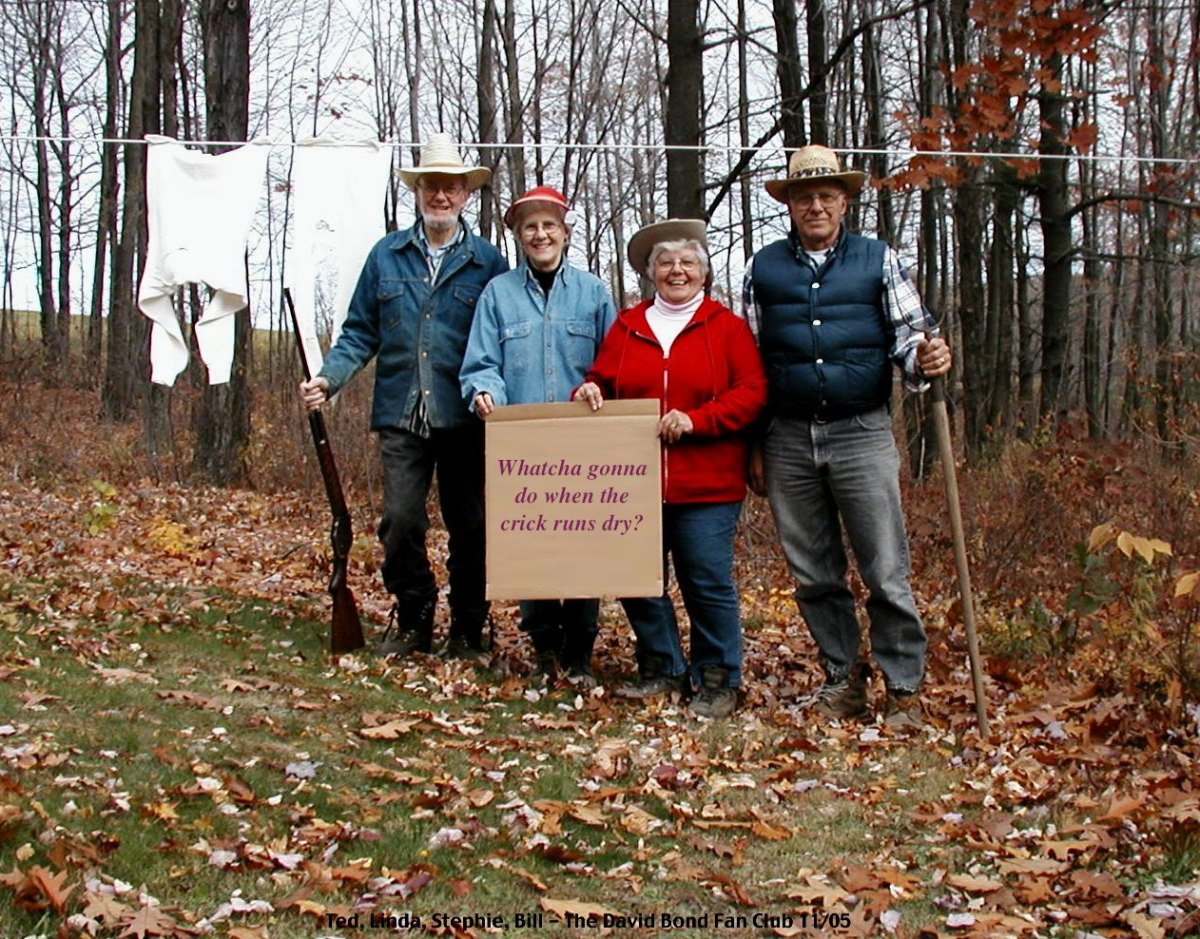Bulls: Bull-worship, Bullfighting, Bullrunning
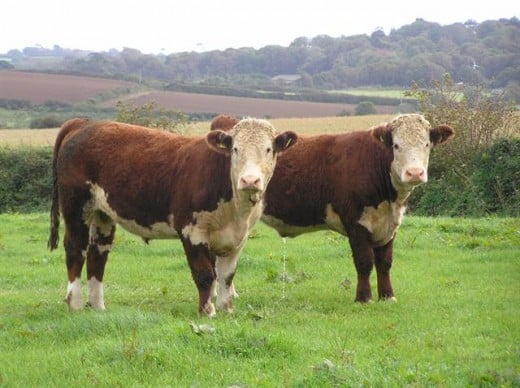
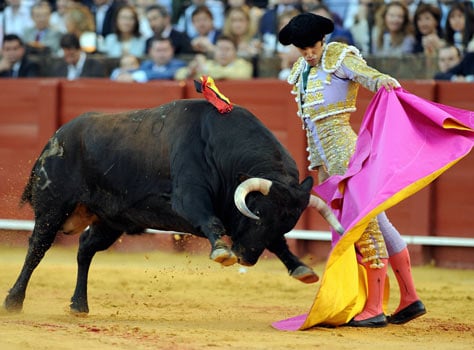
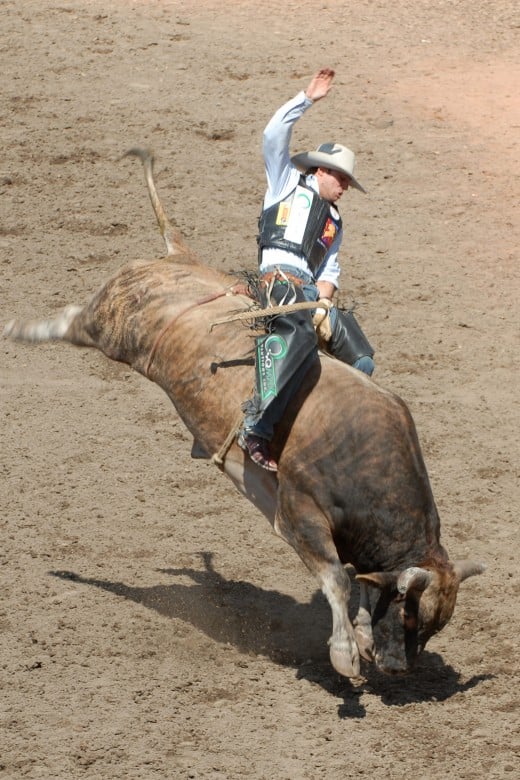
A Brief Background About Bulls
I’ve put up this brief background as a back-up
to the poem, ‘Borodoro the Bull’. A bull, as we all know, is the adult male of
the cattle species, the domesticated Bos Taurus. But the word ‘bull’ by itself
also denotes the males of other bovines, including the bison and the water
buffalo.(That should clear up the confusion that young people have distinguishing between bulls, bison and buffaloes. The early Americans thought the American bison looked more like an Asian buffalo - which it was not!)
The bull is basically related to beef and dairy farming. Why beef? Bulls can be fierce and dangerous. In the wild, they fight over herds of cows and use their horns to gore each other. For this reason, most male cattle are either sent to the butcher while they are still calves or castrated so that they are not likely to fight. Castrated bulls are called steer. Steers are raised for quality beef production.
The bull appears in cave paintings (Lascaux, France). It appears in the Greek zodiac as Taurus; it is also found in the Chinese animal zodiac as the ox. Bulls are venerated in different parts of the world. The bull was worshipped in ancient Egypt as the bull god, Apis. Bull worship was central to Crete in the Mediterranean. Some of us, in our childhood, might have read the Greek myth of the Minotaur, a man with a bull’s head, who lived in the centre of a labyrinth, and was eventually killed by the Athenian hero, Theseus. Minoan frescoes and ceramics depict bull-leaping rituals in which men and women vaulted over bulls by grasping their horns. Those familiar with ancient history might have seen the Assyrian winged bull, or lamassu, which is human above the waist and a bull below the waist. Sometimes the lamassu appears as half-lion, half-man. This creature from Mesopotamian mythology was the household protective spirit of the common Babylonian folk; but later the lamassu became the protectors of kings and pairs of them were placed at palace. citadel and city entrances. In India, the Nandi bull, one of the vehicles of the Hindu god Shiva, is found at the entrance of Saivite temples in South India. I remember seeing a huge Nandi bull, on the Chamundi Hill, outside Mysore, during my visit to that city 25 years ago.
The bull seal at Harappa depicts a zebu bull with a heavy dewlap, which indicates that the bull was worshipped in the Indus Valley thousands of years ago. The worship of the sacred bull throughout the ancient world is familiar to us through the Biblical episode of the idol of the Golden Calf made by the Israelites when Moses went up Mount Sinai. The Bible also has a reference to the bulls of Bashan, probably a fierce breed that ranged the highlands of Bashan and Gilead, east of the Jordan river. The bull is associated with fertility rituals. Jeroboam encouraged the worship of the golden calf or bull in the northern kingdom of Israel. In Acts 14 we have the interesting incident of the temple-priest and the people of Lystra bringing bulls and garlands to worship Paul and Barnabas whom they thought were the Greek gods Jupiter and Mercury.
The word ‘bull’ especially calls to mind the sport of bull-fighting, which is popular in Spain, Portugal and Mexico. However, many countries and even regions in Spain (Canary Islands, Catalonia) have acted to declare bull-fighting illegal. There is a mistaken belief about bulls that they become angry when they see the colour red. This is not true. Cattle cannot tell red from green, and are probably colour blind. The mistake comes from matadors (bull-fighters) using a red cloth or cape to make bulls attack. But red is only used as a tradition. Actually the bull gets angry at the waving motion of the cape.
Bull riding is a rodeo sport in North America which involves a cowboy rider getting on a large bull and trying to stay mounted for a few seconds while the animal attempts to buck off the rider. It is one of the most dangerous sports in the world.
The bull is also the mascot of professional sports teams. Who has not heard of the Chicago Bulls basketball team? Or the Blue Bulls rugby team from South Africa? (Ans. Most people in Asia - and frankly, most parts of the world! - have not heard of either!)
*****
I would like to end this brief account about bulls by describing Pamplona's Bull Festival, also known as the Encierro or the ‘Running of the Bulls', an annual event in the Spanish City of Pamplona. The Encierro is part of the annual San Fermin Festival – a nine day long fiesta of music, theatre, boozing and bull fighting. It all started in the 15th century, but it was not until around 1900 that Encierro runners began taking outrageous risks, making it one of the world's most perilous sports. Every morning during the fiesta in July, a small herd of very large bulls is released onto a half-mile enclosed course running through the streets of Pamplona's old town and down to the bull-ring.
Waiting on the course, and dressed in the traditional all-white costume with red sashes and bandannas, are hundreds of locals and tourists, all eager to participate in Europe's best-known extreme sport. Within seconds of release the bulls are among the runners. Herded by drovers with long sticks their sole aim is to escape the claustrophobia of the narrow street as quickly as they can – and these beasts can travel at speeds of up to 40 kmph. Unfortunate runners getting in their way can be quickly dispatched with a quick toss of their sharp horns.
Many of the runners are drunk from a night of chugging down sangria**, but all of them are determined to experience the thrill of sprinting in front of, or alongside, these mighty half-ton monsters. Their only defence is a rolled-up newspaper that they can use to slap the bull on the nose if one gets too close.
Thousands of spectators line the route, perched on the barriers or peering down from balconies above. As the stampede flies past they shout, cheer and throw beer and sangria. Some terrified runners always tumble over on the slippery cobbles where they can be lacerated by broken glass. Medics stand-by all along the route, ready to whisk the badly injured off to hospital. The first reported death occurred in 1910 and the bloodiest festivals were in 1947 and 1980, when two men were gored to death by the frantic bulls of Pamplona.
Every morning, the more spiritual participants gather around a shrine near the starting line. Here they chant a homily to San Fermin, the saint to whom the festival is dedicated. They pray for his protection throughout the furious three or four minutes of desperate running ahead of them. Most times San Fermin is compassionate. But sometimes he is not.
(**sangria: A local brew made of red or white wine mixed with brandy, sugar, fruit juice, and soda water.)
*****
Sad to say, but I found that my research on Internet search engines always turned up pit bulls (the dogs) rather than the bulls themselves. (And nary a word about bull elephants, bull sharks, bull whales, and what have you.) Seems to reflect the craze for pit-bull dogs in America, rather than a love for bulls themselves.
END
© Pratonix
P.S. If you want to know the difference between a bull and an ox, then try reading http://www.differencebetween.net/science/nature/difference-between-bull-and-ox/
*****
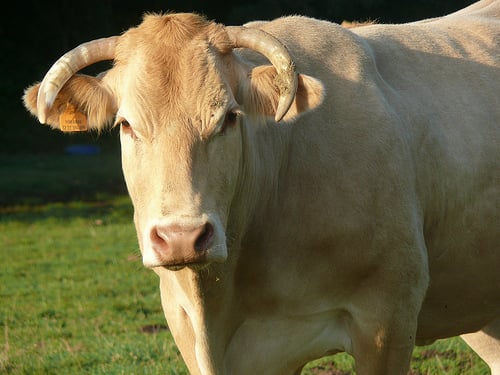
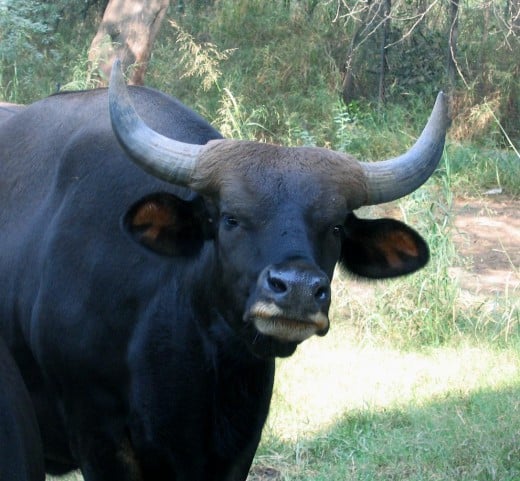
(Here is a children's poem about a fight between a good bull and a bad buffalo.)
Borodoro the Bull
Borodoro was a bull
Whom no matador had fought,
His skin was
white as white as wool
And on his head there was a spot.
He
lived beneath the Bulbul Tree
In the Forest of the Oll,
Where the
grass was green as green could be
And the trees were very tall.
He
lived a life of perfect ease,
Untroubled by the jungle cats;
A
life of sunshine and of bees,
Of drowsy afternoons and gnats.
He
ate all day and slept at night,
Dreaming dreams he loved to dream;
Soon
he was a splendid sight,
Stout and bursting at the seam.
One
day he met the Gadazook,
A buffalo without a tail,
Who gave him
such a fierce look
That he with sudden fright turned pale.
The
Gadazook had a stare
More deadly than a cobra's sting;
It could
kill and cook a hare
Or slay a bird when on the wing.
The
Gadazook had a cry
Which frightened every beast and bird,
And it
is said that some do die
When that awful cry is heard.
The
Gadazook had blood-red eyes
And a mouth which always foamed;
Black
and of a massive size
Through the forest wide he roamed.
He
looked at Borodoro long,
Full of hatred, full of spite;
He was
fierce, huge and strong,
And black as black as night.
Borodoro
looked bravely back,
For he had overcome his fright.
Then did
the Gadazook attack,
But Boro fought with all his might.
For
hours and hours the forest shook,
The fight was fierce as fierce
could be,
Till at last the Gadazook
Fell beneath the Bulbul Tree.
Then
Boro stood and bellowed loud,
An awful cry of victory;
The
leaves, they fell down in a crowd,
Then all was silent as could be.
The
Gadazook, the Gadazook,
The Gadazook was dead, was dead;
And
once more the forest shook
Its leaves upon his coal-black head.
© Tan Pratonix

